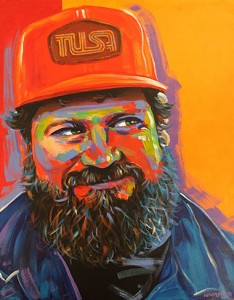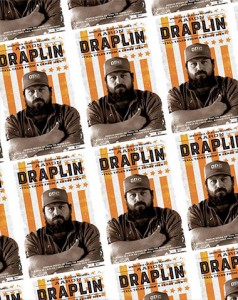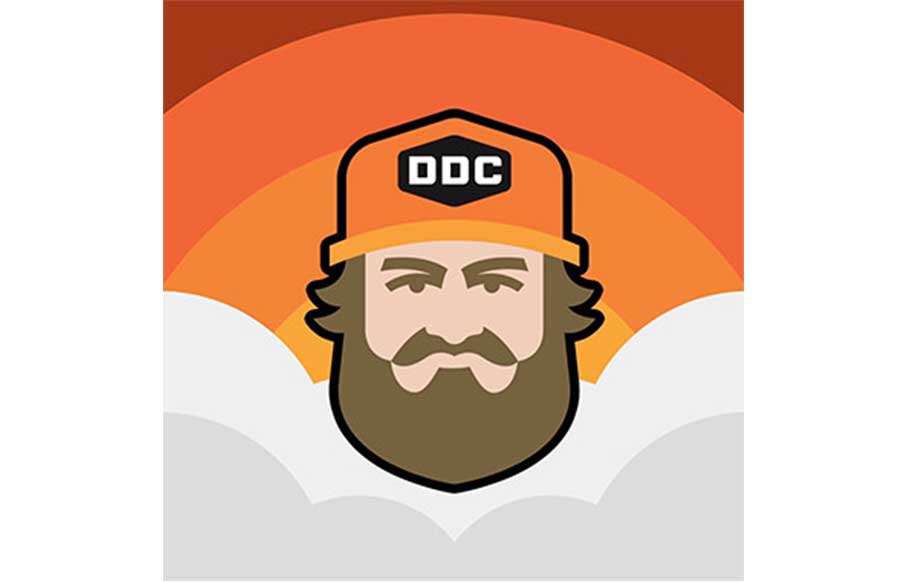The Best Advice for New Graphic Designers
Based in Portland and “midwesting the Northwest,” graphic designer Aaron James Draplin of Draplin Design Co. has built quote a global footprint. Through talent and hard work, DDC’s print, identity, web development, and illustration client lists have grown to include a wide variety of notable brands and names, including Coal Headwear, Union Binding Co., Field Notes, Richmond Fontaine, Nike, Wired, Timberline, Ford Motor Co., Viva Voce, Hutchco, Patagonia, Chunklet, Incase, Giro, Cobra Dogs, Burton Snowboards, Hughes Entertainment, Megafaun, and the Obama Administration.
[soundcloud url=”https://api.soundcloud.com/tracks/197905814?secret_token=s-uOtCP” params=”color=ff5500&auto_play=false&hide_related=false&show_comments=true&show_user=true&show_reposts=false” width=”100%” height=”166″ iframe=”true” /]
In this question discussion, Draplin discusses the necessary hustle in the design industry, his advice for up-and-coming artists, how experience pays off in the long run, and why designers should pursue art as a hobby before going pro.


The Work Behind the Work
When asked what he’s doing differently from other designers today, Draplin pointed to the hustle he puts into his work. He relayed that when others ask him if he’s tired of the constant grind, he answers in the affirmative, but calls it a “sickness,” making one think he’s addicted to the work and the clients that seem to just keep calling. He chooses to not accept being tired because he enjoys the work he does so much. As he cautions up-and-coming designers, there’s always an element of work involved, but it’s still “pretty fun.”
Advice for New Artists
When asked about the type of advice he gives to young artists, Draplin encourages such artists to truly consider their lot in life, especially if they’re able to support themselves with their design work. “There’s not a lot of room to be bummed in it.” Compared to others who may be working in more menial jobs, a professional designer (or design student) can encourage themselves by realizing how fortunate they are to be paid to do something they’d still do without pay. Draplin says it well when he says, “It’s amazing to me, and scary, how kids learn to lament the beautiful situations they’re in.”
The Payoff of Experience
Draplin is a sought-after artist by a number of organizations and brands, both for his design skills and his turnaround time. While particular projects may not take him painstaking days (or hours) to create, he knows that clients ultimately “just need to see good stuff showing up that feels like it’s theirs.” But like most experienced freelancers, he’s “crafted years and years and years to get [him] through a project.” In other words, it’s the many years of practice and experience behind him that allow him quickly create desired designs today.
Art as Hobby Before Art as Income
Lastly, Draplin encourages young artists to pursue art as a hobby before investing the incredible amounts of time into making it their full-time profession or area of study. “The end goal isn’t to get shows or to be some sort of … art or design celebrity.” For Draplin, the end goal was just having fun, and it’s a goal he’s still achieving today—except now he gets paid to do so.
To view DDC’s work, visit Draplin.com or connect with Aaron Draplin on Twitter @Draplin. More interviews from Clark at TechnologyAdvice.com/podcast






0 Comments